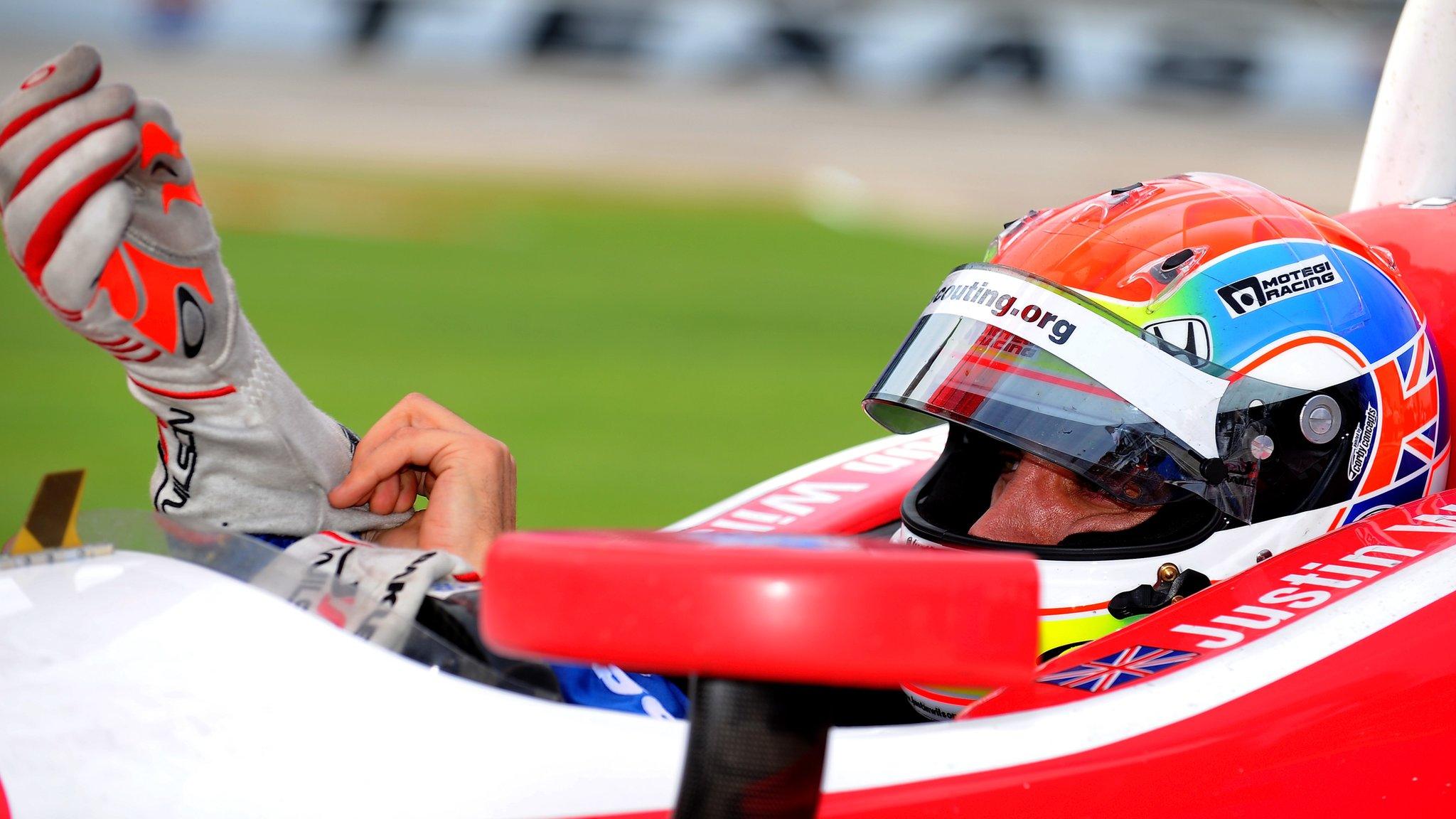Belgian Grand Prix: Drivers demand end of blowouts
- Published

Ferrari driver Sebastian Vettel vented his feelings about the tyre failure at 200mph that cost him a podium position at Spa
Formula 1 drivers have demanded the end of tyre blowouts after two dramatic failures at the Belgian Grand Prix.
Grand Prix Drivers' Association chairman Alexander Wurz said: "We need to stop the sudden explosions."
The intervention comes after Ferrari's Sebastian Vettel and Mercedes' Nico Rosberg suffered tyre failures at close to 200mph at Spa over the weekend.
Pirelli says it is conducting a forensic investigation to understand the failures.
A spokesman said it hoped to have a comprehensive explanation of the causes of Vettel's incident by Thursday.
Former F1 driver Wurz, who leads the GPDA with fellow directors Vettel and Jenson Button, told BBC Sport: "As drivers, we strongly believe the end of a tyre's performance window can and should not be a tyre delamination in the form of an explosion.
"I believe there are technologies which prevent such sudden delamination, but for the short term we need to give Pirelli the freedom and support to introduce any measures they declare safe and fit for F1 racing."
Wurz - who races for Toyota in the World Endurance Championship, where all the leading teams use Michelin tyres - added that the GPDA was in contact with governing body the FIA and Pirelli on the issue.
He said: "We request their utmost attention to the tyre blowouts at Spa. We need to work together to get on top of such safety concerns."
The drivers are angry about the situation because it appears reminiscent to them of the 2013 British Grand Prix, when six tyre failures in one race plunged F1 into crisis.

Pirelli blamed the failure with Nico Rosberg's tyre on Friday on a cut, saying it could find no problem with the structure of any tyres
Pirelli had to make emergency changes to its tyres after that race.
Drivers fear tyre explosions for two reasons:
it causes an unexpected loss of control and can lead to a serious accident
it is extremely dangerous for any driver closely following a car that has a tyre failure because he can be hit by heavy, flying debris from the tyre.
Wurz added: "It needs to be said that we have seen tyre failures throughout the history of F1 and racing.
"This is not desired, but we are aware of the difficulties tyre manufacturers face because of ever-evolving lap times and forces.
"It is the management of and reaction to such failures, and the development of better, faster and safer tyres, which F1 shall and must embrace and even demand.
"This is for the safety of the drivers but also for feeding safer technologies into road tyres."
A Pirelli spokesman said that, at this stage, the company still felt wear was the major contributory factor to Vettel's failure.
He said that most teams and drivers had chosen to do a two-stop strategy, while Ferrari were trying to make it though the race on one stop, and that the longest any other driver ran the medium tyre that failed on Vettel's car was 22 laps by Force India's Sergio Perez.
Vettel's tyre exploded on its 29th lap - well within the maximum of 40 laps Pirelli had recommended to Ferrari. The Italian team were also not warned by their Pirelli engineer during that race that they were taking any significant risks.
Pirelli put out a statement on Sunday night after the race that said its 2013 suggestion to impose maximum usage limits on tyres had not been adopted by F1.
- Published21 August 2015

- Published26 August 2015

- Published24 August 2015

- Published26 August 2015

- Published18 December 2015

- Published2 November 2018

- Published26 February 2019
